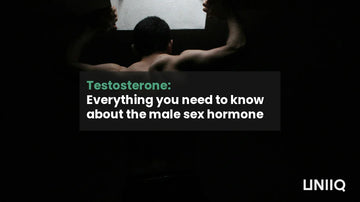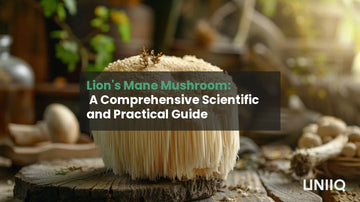Sleep apnea is a commonly overlooked and underestimated condition that affects millions of people worldwide. Characterized by repeated breathing pauses during sleep, this disorder can lead to serious health consequences if left untreated. While many consider snoring to be harmless, it is often one of the most prominent signs of sleep apnea; a warning of restricted airways and multiple breathing interruptions per hour, which can negatively impact sleep quality and cardiovascular health.
In this article, we take a deep dive into sleep apnea by exploring its symptoms, underlying causes, and the most effective treatment methods. These include Continuous Positive Airway Pressure (CPAP) therapy, the gold standard for moderate to severe cases ,as well as newer, innovative approaches like mouth tape, which promotes nasal breathing instead of mouth breathing during sleep.
We’ll also examine alternative strategies for managing sleep apnea, such as lifestyle changes, weight loss, and sleeping position adjustments. Our goal is to provide a comprehensive overview of sleep apnea while emphasizing the importance of early symptom recognition. With the right knowledge and tools, you can take proactive steps toward better sleep and long-term health.
Understanding Sleep Apnea
Sleep apnea is a disorder that causes one or more pauses in breathing during sleep. It is far more than just a cause of snoring; it is a serious medical condition that demands attention and treatment. These breathing pauses, known as “apneas,” can last from a few seconds to several minutes and may occur dozens of times per hour throughout the night. This irregular breathing pattern can lower blood oxygen levels and significantly increase the risk of various health complications.

There are three primary types of sleep apnea:
- Obstructive Sleep Apnea (OSA): The most common form, where breathing pauses occur because the muscles at the back of the throat relax excessively, blocking normal airflow.
- Central Sleep Apnea: Less common than OSA, this type occurs when the brain fails to send proper signals to the muscles responsible for breathing.
- Complex Sleep Apnea Syndrome: Also known as treatment-emergent central sleep apnea, this is a combination of both obstructive and central sleep apnea.
The risk factors for sleep apnea are varied, ranging from lifestyle-related issues like excess weight (which can contribute to narrowed airways) to anatomical causes such as a naturally narrow throat or a large tongue. Obstructive sleep apnea in particular is often worsened by the use of alcohol or sedatives, as these can lead to further relaxation of the throat muscles.
Symptoms of sleep apnea can vary but often include loud snoring, restless sleep, and excessive daytime fatigue. Other signs may include morning headaches, night sweats, or frequent trips to the bathroom during the night. Recognizing these symptoms is critical, as untreated sleep apnea not only disrupts sleep quality but also increases the risk of high blood pressure, heart attack, stroke, and other cardiovascular complications.
To make an accurate diagnosis, healthcare professionals may conduct a sleep study, or polysomnography, which monitors breathing patterns, heart activity, and other vital functions during sleep. This provides a detailed understanding of sleep quality and the number of apneas per hour, an essential step in developing an effective treatment plan.
Conventional Treatment Methods
Once a diagnosis of sleep apnea is confirmed, the next step is to explore available treatment options. There are several conventional approaches that have proven effective, particularly in cases of moderate to severe sleep apnea. These include mechanical interventions, oral appliances, and, in some cases, surgical procedures.
CPAP Therapy (Continuous Positive Airway Pressure)

Continuous Positive Airway Pressure, or CPAP, is the most widely recognized and commonly recommended treatment for moderate to severe sleep apnea. A CPAP machine delivers a constant stream of air through a mask worn over the nose and mouth during sleep. This airflow is precisely calibrated to be strong enough to keep the airway open, yet gentle enough to avoid discomfort. While some patients may initially find the mask or device challenging to adjust to, many report a significant improvement in sleep quality and a reduction in sleep apnea symptoms with consistent CPAP use.
Oral Appliances

For individuals with mild sleep apnea, or for those who find CPAP machines uncomfortable or impractical, oral appliances may offer a suitable alternative. These devices, resembling a sports mouthguard or orthodontic retainer, work by repositioning the jaw or tongue to help keep the airway open during sleep. While generally less effective than CPAP in treating severe sleep apnea, oral appliances can be a viable solution for those with mild to moderate obstructive sleep apnea.
Surgical Interventions
In some cases, particularly when structural abnormalities of the nose, throat, or jaw contribute to sleep apnea—surgical intervention may be considered. Procedures such as Uvulopalatopharyngoplasty (UPPP) or Maxillomandibular Advancement (MMA) are designed to enlarge the airway and reduce the number of apnea events per hour. Surgery is typically regarded as a last resort, reserved for cases where other treatment methods have been tried without sufficient success.
While these traditional treatment methods can be highly effective, it’s important to recognize that their success often depends on individual adjustment and ongoing follow-up. For those struggling with CPAP therapy, it may be necessary to try different mask types or adjust air pressure settings to find the most comfortable and effective fit. Similarly, oral appliances must be carefully fitted and regularly adjusted to ensure optimal results.
In the next section, we’ll explore an innovative approach to sleep apnea treatment: mouth taping. This method encourages nasal breathing and may help reduce the number of breathing interruptions during sleep — offering a simple yet potentially effective solution for individuals with mild to moderate sleep apnea.
What Is Mouth Tape and How Does It Work?
Mouth tape is an innovative and straightforward solution for managing certain types of sleep apnea—particularly for individuals with mild to moderate obstructive sleep apnea (OSA). This method involves applying a specially designed adhesive strip over the mouth during sleep, encouraging nasal breathing instead of mouth breathing. While the concept may seem too simple to be effective, multiple studies and user experiences have shown that mouth taping can have a significant positive impact on sleep quality and overall health.
Benefits of Mouth Taping
Using mouth tape can offer several advantages for individuals with sleep apnea, including:
Improved Breathing Patterns: By encouraging nasal breathing, mouth taping helps stabilize airflow, reduce the number of apnea episodes per hour, and support deeper, more restorative sleep.
Reduction in Snoring: Snoring—a common symptom of sleep apnea—can be significantly reduced when mouth breathing is restricted. This leads to a quieter sleep environment for both the person affected and their partner.
Enhanced Oxygen Intake: Nasal breathing is generally more efficient than mouth breathing and may improve oxygen absorption. This is especially important for individuals with sleep apnea, who often experience reduced oxygenation during sleep.
There are also clinical studies that support the positive effects of mouth taping in reducing sleep apnea symptoms — including The Impact of Mouth-Taping in Mouth-Breathers with Mild Obstructive Sleep Apnea: A Preliminary Study.
Other Alternative Treatment Methods
Beyond traditional therapies and the innovation of mouth taping, there are several alternative approaches for managing sleep apnea. These methods often focus on lifestyle changes or natural remedies that may help improve sleep quality and reduce the frequency of breathing interruptions during the night. Here are some alternatives that have shown effectiveness for many individuals:
Lifestyle Modifications
-
Weight Loss:
- Excess weight can contribute to narrowed airways and an increased risk of sleep apnea. Losing weight may reduce the amount of tissue in the throat and improve breathing during sleep.
-
Avoiding Alcohol and Sedatives:
- These substances can relax the muscles in the throat, potentially worsening sleep apnea. It’s recommended to avoid them, especially in the hours before bedtime.
-
Regular Exercise:
- Physical activity can enhance sleep quality, reduce stress, and assist with weight management, all of which may positively impact sleep apnea symptoms.
-
Optimized Sleeping Position:
- Sleeping on your side rather than on your back can help prevent the tongue and soft tissues in the throat from obstructing the airway.
Natural Remedies and Techniques
- Breathing Exercises: Practices such as yoga or Pilates that emphasize breath control can help strengthen the respiratory muscles and improve oxygen intake.
- Humidity in the Bedroom: Using a humidifier can add moisture to the air, which may reduce airway irritation and make breathing easier during sleep.
- Allergy Management: For individuals who also suffer from allergies, managing those symptoms, such as with air purifiers or allergy medications, can reduce the risk of airway obstructions during sleep.
Acupuncture and Alternative Medicine
Some individuals find relief from sleep apnea symptoms through alternative therapies such as acupuncture. However, it is essential to consult with a healthcare professional before beginning such treatments, and they should not replace conventional therapies without medical guidance.
It is important to note that while these methods may be helpful for some, they are not substitutes for professional medical advice or treatment. Always speak with a doctor or sleep apnea specialist to develop a personalized treatment plan.
Conclusion
Sleep apnea is a condition that, without proper attention and treatment, can lead to serious health issues and a significant decline in quality of life. From traditional treatments such as CPAP and oral appliances to innovative solutions like mouth taping, and even lifestyle changes and alternative techniques, the range of treatment options is broad and adaptable to individual needs and preferences.
This article has highlighted the importance of understanding sleep apnea, its symptoms, causes, and consequences, while presenting a variety of treatment methods, including the promising and user-friendly approach of mouth taping. However, it’s essential to recognize that while some methods may offer significant improvement for certain individuals, a personalized approach, often in consultation with a healthcare professional, is key to effectively managing sleep apnea.
We strongly encourage readers not to ignore the signs of sleep apnea and to seek professional evaluation and guidance for a tailored treatment plan. By taking proactive steps, whether through established therapies or alternative methods like mouth taping, individuals can not only improve their sleep quality but also their overall health and well-being.
Sleep apnea is more than just a nightly inconvenience; it is a serious health concern that deserves our full attention. By understanding the condition, recognizing the symptoms, and exploring the full range of available treatments, we can all take meaningful steps toward better sleep, and ultimately, a healthier life.







